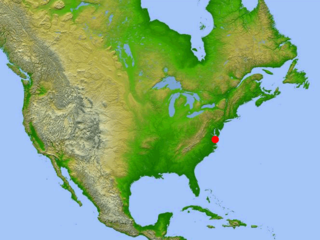 W
WThe Chesapeake Bay impact crater was formed by a bolide that impacted the eastern shore of North America about 35.5 ± 0.3 million years ago, in the late Eocene epoch. It is one of the best-preserved "wet-target" impact craters in the world.
 W
WChiyli is an impact crater in Kazakhstan.
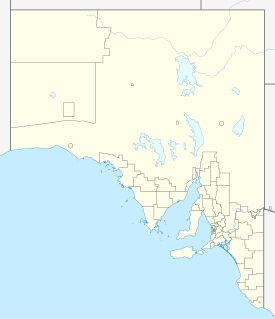 W
WCrawford is an impact crater near Adelaide in South Australia, Australia.
 W
WFlaxman is a meteorite crater in South Australia, Australia.
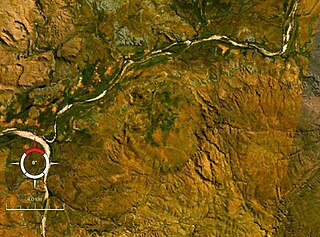 W
WGoat Paddock is a 5 km-diameter near-circular bowl-shaped depression in a range of gently dipping Proterozoic sandstone in the Kimberley Region of northern Western Australia, 106 km west-southwest of Halls Creek. It is interpreted as an ancient meteorite impact crater, the evidence including breccia containing melted rocks, silica glass, shatter cones and shocked quartz. Drilling shows that the crater is filled with about 200 m of ancient lake sediments containing Early Eocene pollen, this age thus giving a minimum estimate for the age of the crater itself. The crater is not perfectly circular, but slightly elongated in a north–south direction, suggesting that the projectile struck at low angle from either the north or south.
 W
WHaughton impact crater is located on Devon Island, Nunavut in far northern Canada. It is about 23 km (14 mi) in diameter and formed about 39 million years ago during the late Eocene. The impacting object is estimated to have been approximately 2 km (1.2 mi) in diameter. Devon Island itself is composed of Paleozoic shale and siltstone overlying gneissic bedrock. When the crater formed, the shale and siltstone were peeled back to expose the basement; material from as deep as 1,700 m (5,600 ft) has been identified.
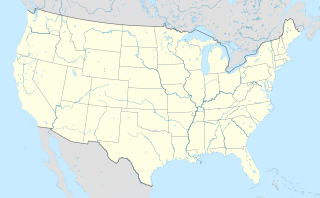 W
WThe Johnsonville crater or the Snow's Island crater is a circular geophysical feature situated at the junction of the Lynches River and the Pee Dee River in South Carolina, United States, which has been interpreted by some scientists as an impact crater. Snow's Island, at that point, is believed to be the upthrust formed at the center of the crater after the impact. The structure is approximately 8 miles (13 km) in diameter, but is not well defined at the surface. It was discovered by magnetic anomalies, supported by the study of well drilling cores. Supposed impact breccia was found in these cores. The Russian Academy of Sciences lists the structure as a proven impact crater, though the Earth Impact Database (EID) does not list it as confirmed.
 W
WKamensk crater is an impact crater located 10 to 15 kilometres to the south of Kamensk-Shakhtinsky town in Rostov Oblast, Russia. It is 25 km (16 mi) in diameter and the age is estimated to be 49.0 ± 0.2 million years old (Eocene). The crater is not exposed at the surface. It may have formed at the same time as the smaller and nearby Gusev crater.
 W
WLake Wanapitei occupies a meteorite crater in Sudbury, Ontario, Canada. It is located near the much larger Sudbury meteorite crater but they are not related.
 W
WLogancha is a meteorite crater in Siberia, Russia. It is 20 km (12 mi) in diameter and the age is estimated to be 40 ± 20 million years old. The crater is not exposed at the surface.
 W
WLogoisk crater is a meteorite impact crater in Belarus near the city of Lahojsk.
 W
WMistastin crater is a meteorite crater in Labrador, Canada which contains the roughly circular Mistastin Lake. The lake is approximately 16 km (9.9 mi) in diameter, while the estimated diameter of the original crater is 28 km (17 mi). The age of the crater is calculated to be 36.4 ± 4 million years (Eocene).
 W
WThe Popigai crater in Siberia, Russia, is tied with the Manicouagan Crater as the fourth largest verified impact crater on Earth. A large bolide impact created the 100-kilometre (62 mi) diameter crater approximately 35 million years ago during the late Eocene epoch. It might be linked to the Eocene–Oligocene extinction event.
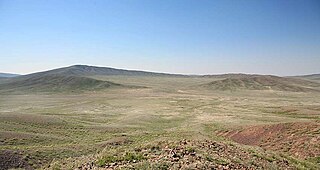 W
WShunak is a meteorite impact crater in the southeastern part of Qaraghandy Province in Kazakhstan.
 W
WThe Victoria Island structure is a 5.5 km (3 mi) bowl-shaped structure buried in the shale sediments of the Sacramento-San Joaquin River Delta, 12 miles (19 km) west of Stockton, California. The circular structure is part of a former sea bed, and lies 1,490–1,600 meters (4,890–4,250 ft) below sea level.